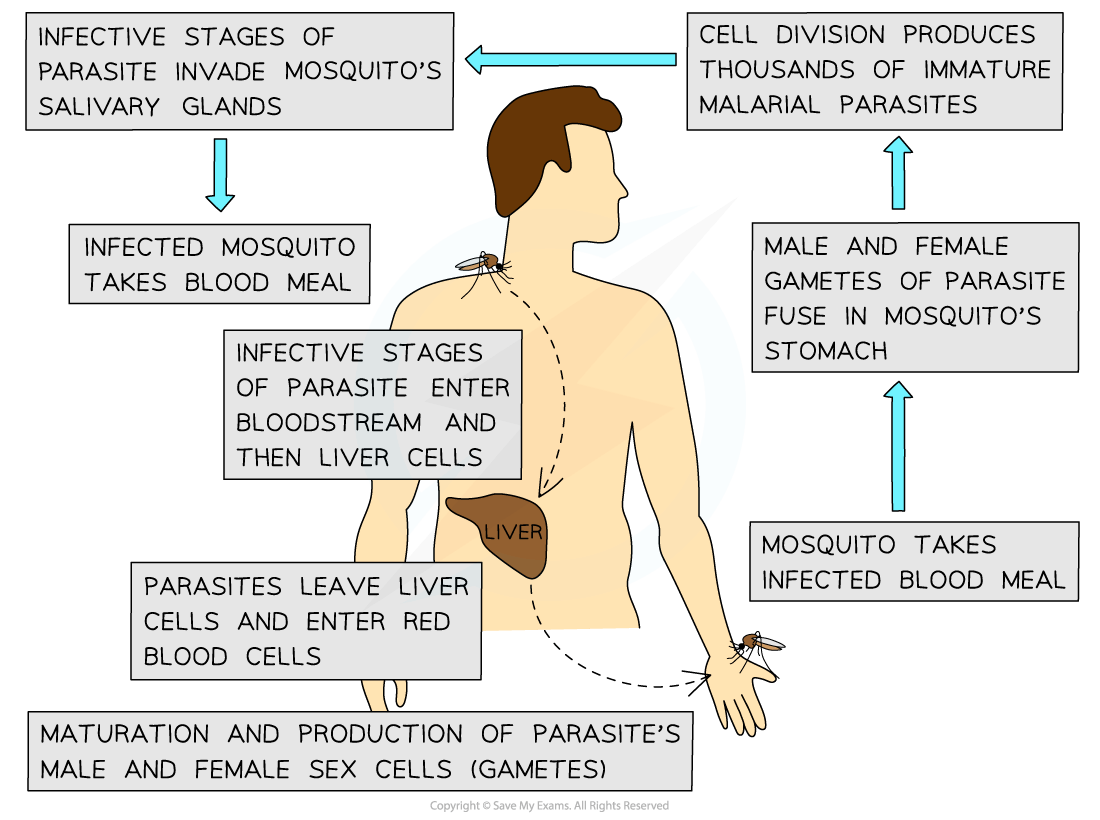Transmission of Disease (Cambridge (CIE) AS Biology): Revision Note
Exam code: 9700
Transmission of common diseases
Transmission of cholera
Cholera is caused by the bacterium Vibrio cholerae
The disease is water-borne and food-borne
Infected people egest large numbers of the pathogenic bacteria in their faeces and water becomes contaminated
Cholera can then be transmitted when individuals:
Wash in contaminated water
Drink contaminated water
Eat food exposed to contaminated water
This means the disease occurs where people do not have access to proper sanitation and uncontaminated food
Transmission of malaria
Malaria is caused by one of four species of the protoctist Plasmodium
These protoctists are transmitted to humans by an insect vector as follows:
Female Anopheles mosquitoes feed on human blood to obtain the protein they need to develop their eggs
If the person they bite is infected with Plasmodium, the mosquito will take up some of the pathogen with the blood meal
When feeding on the next human, Plasmodium pass from the mosquito to the new human’s blood
Malaria may also be transmitted:
During blood transfusion
When unsterile needles are re-used
Plasmodium can also pass from mother to child across the placenta

Transmission of tuberculosis (TB)
TB is cause by the bacterial pathogens Mycobacterium tuberculosis and Mycobacterium bovis
Human to human transmission occurs by droplet infection as follows:
When infected people with the active form of the disease cough or sneeze, M. tuberculosis bacteria enter the air in tiny droplets of liquid
TB is transmitted when uninfected people inhale these droplets
TB therefore spreads more quickly among people living in overcrowded conditions
The form of TB caused by M. bovis occurs in cattle but can spread to humans through:
Contaminated meat
Unpasteurised milk
Very few people in developed countries now acquire TB in this way, although meat and milk can still be a source of infection in some developing countries
Transmission of HIV/AIDS
Human Immunodeficiency Virus (HIV) can infect human cells and eventually lead to AIDS
The virus is spread by intimate human contact and can only be transmitted by direct exchange of body fluids
This means HIV can be transmitted in the following ways:
Sexual intercourse
Blood donation
Sharing of needles used by intravenous drug users
From mother to child across the placenta
Mixing of blood between mother and child during birth
From mother to child through breast milk
Disease | Pathogen | Transmission | Symptoms |
|---|---|---|---|
Cholera | Vibrio cholerae | Contaminated water or food | Diarrhoea and dehydration |
Malaria | Plasmodium falciparum, P. malariae, P. ovale, P. vivax | Female Anopheles mosquito | Fever, headaches and muscle pain |
TB | Mycobacterium tuberlulosis, M. bovis | Airborne droplets | Cough, chest pain, fever and weight loss |
HIV/AIDS | Human Immunodeficiency Virus | Exchange of body fluids | Initial flu-like symptoms, and eventually a loss of immune function (AIDS) |

Unlock more, it's free!
Did this page help you?